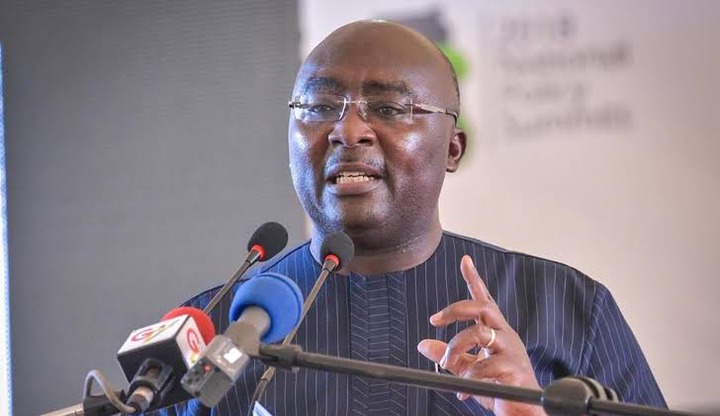
It is often said that two is better than one, and in most cases the saying actually holds water. Think about it, you wouldn’t really walk on the street with just one shoe, right? How about riding a unicycle? Difficult, I imagine. What about just one of your earphones working when listening to music? I can bet it's unpleasant at the very least.
My point is, some things just work better in pairs. However, that can’t always be the case. Also Read: Decoding the EV story; How manufacturers like BYD have reshaped the auto industry You can’t eat your steak with two forks, that’d be impractical.

You’d need a knife to cut the meat cleanly and a fork to grab it up. Now you might ask, where I'm headed with these rudimentary analogies? Trust me, there’s a point to this. However, let’s stay with the dining essentials for a few moments more.
Same way you can’t eat a steak with two forks, you can’t eat a bowl of cereal with chopsticks either; you’d need a spoon instead. Keeping all these things in mind, here’s my point — Honda and Nissan are two forks and the auto industry is the steak. To make the most of the steak, these two forks would have to metamorphose into a fork and knife, but there lies the problem.
Who becomes the fork? Who becomes the knife? Who can provide what utility? etc. etc. Ultimately, these questions proved to be just too difficult for either party to reach a consensus on.
The result? Catastrophic failure. Regardless, let’s take a closer look at what actually happened between the two stalwarts and why their merger fell through. Nissan-Honda merger; How it happened The auto industry today is at an interesting juncture.
On one end, you have legacy carmakers scrambling to put together a robust infrastructure for all-electric mobility like original platforms, charging infrastructure, development of better, more efficient battery cells etc. On the other end, you have new age manufacturers like Tesla and BYD with fresh ideas, not much to lose, a set plan, and most importantly, a leg up in the all-electric mobility. In 2023, BYD achieved a total yearly sales of 3,024,417 new energy vehicles and a total monthly sales of 341,043 new energy vehicles in December, a YoY growth of 61.
8% & 45.0% respectively. We look forward to contributing to another year of decarbonization in 2024! #BYD .
.. pic.
twitter.com/p0OIZoiNfi — BYD Global (@BYDGlobal) January 1, 2024 On a separate line are manufacturers who still are also betting on ICE vehicles and looking at Hybridization with Strong Hybrids as well as PHEVs as they aim to combine their existing tech with electric mobility to hit two birds with one stone. Honda and Nissan fall in the third category.
While both brands have some great hybrid powertrains in their repertoire, all-electric mobility is where they lack behind. Honda and Nissan start talks to merge by 2026 in a bid to become the world's third-largest carmaker by sales https://t.co/xV9HeFJoEr — Bloomberg (@business) December 23, 2024 Nissan had a strong start with the leaf, but the competition has since caught up.
Honda never truly developed all-electric options and only recently started selling its first EV — the Prologue — in the US, but that’s just a rebadged Chevrolet Blazer EV. Needless to say, both brands felt they needed to join hands to keep up with the competition, and they did as both Nissan and Honda are collaborating on developing EV tech. So things seemed like they were going rather well, which begs the question, what happened? Nissan-Honda Merger; Why did it fall through? Talks of a possible merger began in December last year as both companies were looking towards the future.
Talks were centered around developing EV technologies and exchanging tech. As stated above, the two car manufacturers have already been collaborating on all-electric mobility. The move was seen as a way to ensure both the companies’ futures with the advent of Chinese EV makers like BYD taking the global auto industry by storm.
However, after repeated negotiations and talks, the two companies failed to reach an agreement that would satisfy both parties. Nissan’s Makoto Uchida said that Honda wanted Nissan to become a wholly-owned subsidiary of Honda — something which didn’t fly well with Nissan’s board of directors. According to Reuters , the merger would’ve been worth $60billion.
Sources in the media also talk of Nissan’s ongoing financial troubles and how Honda’s operating profits are double to that of Nissan. Thus, a partnership wouldn’t entirely be possible unless Nissan cut its losses, which could prove difficult. The road ahead Though the deal didn’t go through, Honda and Nissan have both said they will continue to collaborate on developing EV technology as they both look to offset the competition from overseas.
As things stand, it looks like the two automakers are on their own as far as partnerships go. Nissan is already a part of the Nissan-Renault-Mitsubishi group, but the automaker has said it is open for talks with interested parties. Reports suggest that Foxconn could be looking at collaborating with Nissan, though no official bid or talks have been held between the two companies.
Taiwan's Foxconn would consider taking a stake in Nissan for cooperation, its chairman said, as the Japanese automaker's future hangs in the balance after stepping back from merger talks with Honda. More here: https://t.co/MN05SsH2bv — Reuters Business (@ReutersBiz) February 13, 2025 Honda presented the first two models in the company’s new 0 Series line of EVs at #CES2025 .
Honda also debuted its original vehicle operating system (OS) for use in Honda 0 Series models. Learn More: https://t.co/oUAgBLQpwk pic.
twitter.com/r6gfG0mWZa — Honda (@Honda) January 7, 2025 As the global automotive industry looks towards all-electric mobility, Honda showcased its own line of EVs at January’s CES event. Dubbed the Honda 0 series, the Japanese automaker showcased the Honda 0 Saloon as well as the 0 SUV, with its own SoC as well as a proprietary operating system known as the ASIMO OS.
Honda says the vehicle will be introduced in the global markets starting next year, that’s 2026. Also Read: Thinking about buying a car? Here's why a Hybrid vehicle could be your ideal pick.














